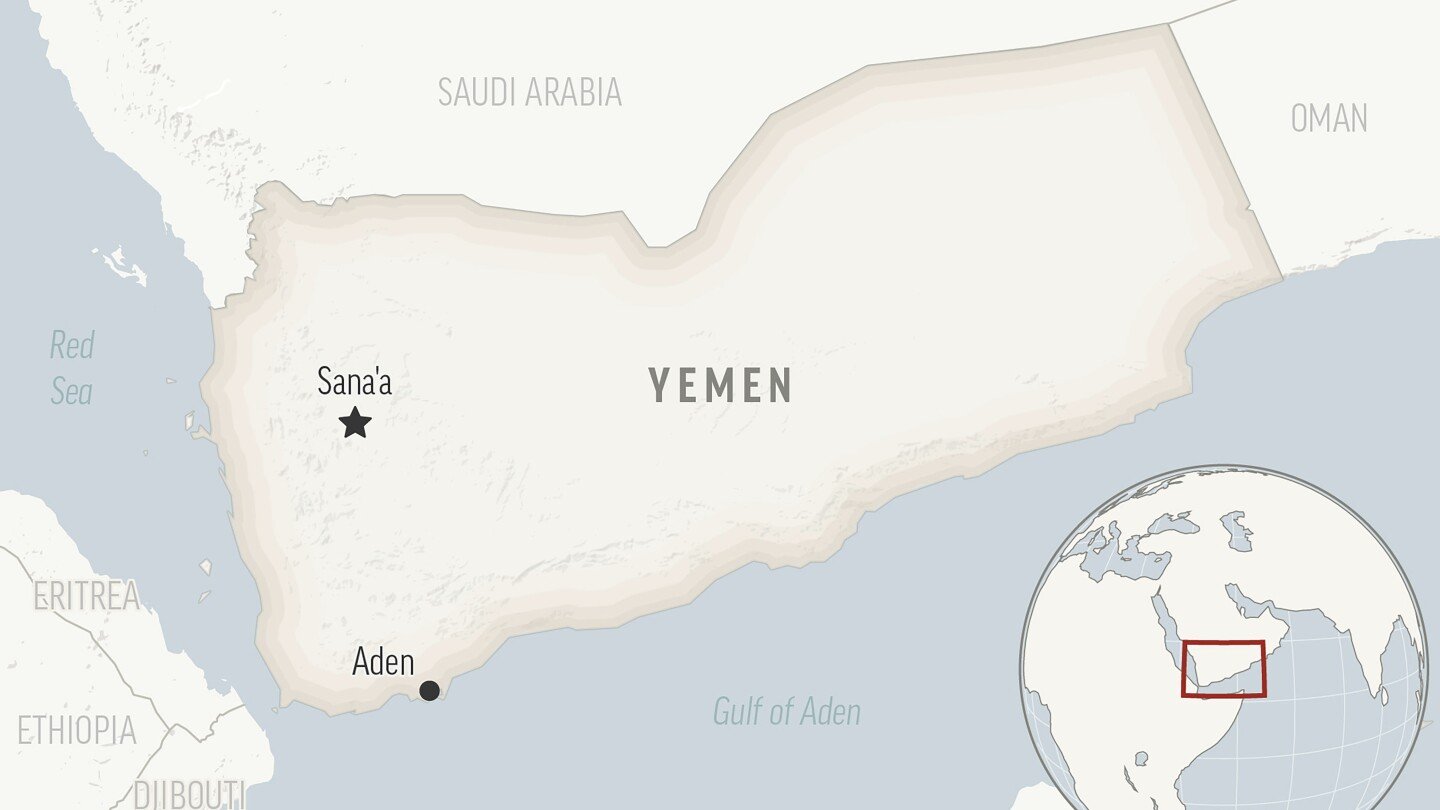Minecraft itself requires an online account, though, yes? Is linked to some sort of central authentication system, needs to be connected to play?
- 123 Posts
- 4.01K Comments
Well, GOG sells a lot of commercial games and doesn’t require online connectivity for anything marked as “DRM free”. Tend to be older. Once you download it, no link to the service required.
I think that all the – be they free or commercial – games on itch.io don’t require signing up for a service, unless the game itself has some sort of service. I don’t have specific recommendations there, though.
Games bundled in a Linux distro won’t require a service.
There are open-source games.
I personally like Cataclysm: Dark Days Ahead, which is a very deep open-world roguelike set in a post-apocalyptic world with zombies. Steep learning curve, as a warning, but you can do all sorts of stuff. NPCs, build bases and set up electrical power, build ground vehicles, boats, and rotary-wing craft. Vehicles can carry other vehicles, can have video cameras, turrets, armor, various sorts of lights, rams and other melee weaponry. Bionics, mutations, skills, farming, crafting, quests, music and sound packs, graphical tiles. Martial arts. Contains probably more real-world firearms than any other game I know of, does stuff like multiple optics, various stock and handle modifications, powder fouling. Moddable melee weapons. Artifacts. Mods to add spells, psionics, and various magic items. Traps and static defenses. Cooking, brewing, drugs, alcohol, various types of clothing. Explosives. Waifu body pillows. Regional weather simulation. Heating and cooling. Lovecraftian stuff. Radiation. Remote-controlled vehicles. Senses including smell, hearing with temporary and permanent impairment modeling, infrared, vision to see magnetic fields, light-amplification optics, eye dilation simulation when entering different light levels. Vehicle-mounted battery chargers, kitchenettes, water tanks, rainwater collection systems, water purification systems. Radios. Various factions of enemies, some of which fight each other. Bandits. Lockpicking, teleportation, various types of diseases, parasitic and fungal infections, various types of poisoning. Hacking. Furniture. Various types of psychological conditions. Gasses, gills, skates, broken limbs, stances, folding bicycles, body part level encumbrance, container size maximums (including modeling things like mesh bags that can’t contain small items and waterproof containers that protect things that are destroyed by immersion in liquid), pockets in clothing, various types of holsters and sheaths that can be worn on various places on the body. Pain, guilt, cannibalism, music. It’s got a lot of stuff. There’s a build on Steam now pre-set up with graphics and sound if you want to donate, but you can also just download the builds from the dev site for free. Has mobile builds, but I think that it really benefits from the computational power of a PC, as well as a keyboard.
Dwarf Fortress also has a steep learning curve, is a colony simulator. Not open source, but free, also deep, many hours you can spend there.
Shattered Pixel Dungeon is an open source roguelike, relatively shallow learning curve. Really aimed at touchscreen devices like smartphones, but has computer builds, has support for keys and stuff. See !pixeldungeon@lemmy.world.
Mindustry is an open-source factory automation game in the vein of Factorio. Works on mobile or PC platforms.
I’ve only played Unciv on smartphone, but apparently it also has PC builds. It’s an open-source reimplementation of Civilization V, sans all the pretty graphics and animation and music and such. One of the deeper games I think you can get on a phone.
Someone else mentioned Minecraft. I think that that requires an account with the service these days, though Luanti – until recently known as Minetest – is a similar, open-source project that does not.
Dungeon Crawl: Stone Soup is a tough roguelike known for being well-balanced, with the devs stripping out unnecessary stuff and streamlining it. I don’t play it much these days, but I’ve enjoyed it in the past.
Endless Sky is an open-source clone of Escape Velocity for the classic Mac, a 2D space exploration, fighting, and trading game. I don’t play it much, but I think that it’s worth a look if you’ve never played it.
Battle for Wesnoth is an open-source tactical hex-grid game. Characters can level up and gain abilities. Can be played on mobile OSes, though I think that it really benefits from a mouse.
I am not personally all that into OpenTTD, an open-source game based on Transport Tycoon Deluxe, but I have played it and have seen many people who are super-into-it.
I’ve played and enjoyed the open-source 0 A.D., some time back, but last I played it, it had a bunch of work still to be done. An Age of Empires clone.
There are a handful of open-source RTS Total Annihilation-inspired games based on the open-source Spring engine, like Beyond All Reason.
You can broadcast to everyone connected to a WiFi network. That’s just an Ethernet network, and there’s a broadcast address on Ethernet.
Typically, WiFi routers aren’t set up to route broadcasts elsewhere, but with the right software, like OpenWRT, a very small Linux distribution, you can bridge them to other Ethernet networks if you want.
Internet Protocol also has its own broadcast address, and in theory you can try to send a packet to everyone on the Internet (
255.255.255.255), but nobody will have their IP routers set up to forward that packet very far, because there’s no good reason for it and someone would go and try to abuse it to flood the network. But if everyone wanted to, they could.I don’t know if it’s what you’re thinking of, but there are some projects to link together multiple WiFi access points over wireless, called a wireless mesh network. It’s generally not as preferable as linking the access points with cable, but as long as all the nodes can see each other, any device on the network can talk to others, no physical wires. I would assume that on those, Ethernet broadcasts and IP broadcast packets are probably set up to be forwarded to all devices. So in theory, sure.
The real issue with broadcast on the Internet isn’t that it’s impossible to do. It’s just that unlike with TV, there’s no reason to send a packet to everyone over a wide area. Nobody cares about that traffic, and it floods devices that don’t care about it. So normally, the most you’ll see is some kind of multicast, where devices ask that they receive packets from a given sender, subscribe to them, and then the network hardware handles the one-to-many transmission in a sort of star architecture.
You can also do multicast at the IP level today, just as long as the devices are set up for it.
If there were very great demand for that today, say, something like Twitch TV or another live-streaming system being 70% of Internet traffic the way BitTorrent was at one point, I expect that network operators would look into multicast options again. But as it is, I think that the real problem is that the gains just aren’t worth bothering with versus unicast.
kagis
Today, looks like video is something like that much of Internet traffic, but it’s stuff like Netflix and YouTube, which is pretty much all video on demand, not a live stream of video. People aren’t watching the network at the same time. So no call for broadcast or multicast there.
If you could find something that a very high proportion of devices wanted at about the same time, like an operating system update if a high proportion of devices used the same OS, you could maybe multicast that, maybe with some redundant information using forward error correction so that devices that miss a packet or two can still get the update, and ones that still need more data using unicast to get the remaining data. But as it stands, just not enough data being pushed in that form to be incredibly interesting bothering with.

 21·8 hours ago
21·8 hours agoAs best I can tell, it appears that in neither case did the killings resolve the issue that the killer was upset about.
I do.
I think that it’s one of the services that dramatically enhances both my online experience, but also the world’s. And I’d rather have it donation supported than ad-supported or similar.
There aren’t many services that I’ll donate to, but this is one.

 29·22 hours ago
29·22 hours agoStrictly speaking, China has gone from encouraging Chinese to have as many children early on, when IIRC Mao felt that population density encouraged industrialization, then to restrictive birth policy under One Child for a long time, and then back to trying to get people to have kids in the mid-2010s as demographic concerns rose.
https://en.wikipedia.org/wiki/One-child_policy
It’s more that China is state-interventionist than that it has consistently favored few or many children.
I’d argue that banning abortion is probably state interventionist, more in line with the consistent thread of overall Chinese policy over the years.

 2·1 day ago
2·1 day agoI have a very, very tiny folding knife (less than an inch blade) on my keychain, and unless I’m flying somewhere, I always have that, and I suppose that that could cut a seatbelt, though I doubt that it’d be likely for the seatbelt to jam. No glass punch, though.

 15·1 day ago
15·1 day agoinvestigates
Hmm. Apparently, yeah, some Tesla vehicles do and some do not.
reads further
It sounds like autos in general are shifting away from tempered glass side windows to laminated glass, so those window breakers may not be effective on a number of newer cars. Hmm. Well, that’s interesting.
https://info.glass.com/laminated-vs-tempered-car-side-windows/
You may have seen it in the news recently—instances of someone getting stuck in their vehicle after an accident because the car was equipped with laminated side windows. Laminated windows are nearly impossible to break with traditional glass-break tools. These small devices are carried in many driver’s gloveboxes because they easily break car windows so that occupants can escape in emergency situations. Unfortunately, these traditional glass-break tools don’t work with laminated side windows. Even first responder professionals have difficulty breaking through laminated glass windows with specialized tools. It can take minutes to saw through and remove laminated glass. In comparison, tempered glass breaks away in mere seconds.

 10·1 day ago
10·1 day agoOne other factor that I think is an issue with motion blur: the modeling of shifting gaze in video games often isn’t fantastic, due to input and output device limitations.
So, say you’re just looking straight ahead in a game. Then motion blur might be fine – only moving objects are blurred.
But one very prominent place where motion blur shows up is when the direction of your view is changing.
In a video game, especially if you’re using a gamepad, it takes a while to turn around. And during that time, if the game is modeling motion blur, your view of the scene is blurred.
Try moving your eyeballs from side to side for a bit. You will get a motion-blurred scene. So that much is right.
But the problem is that if you look to the side in real life, it’s pretty quick. You can maybe snap your eyes there, or maybe do a head turn plus an eye movement. It doesn’t take a long time for your eyes to reach their destination.
So you aren’t getting motion blur of the whole surrounding environment for long.
That is, humans have eyes that can turn rapidly and independently of our heads to track things, and heads that can turn independently of our torsos. So we often can keep our eyes facing in one direction or snap to another direction, and so we have limited periods of motion blur.
Then on top of that, many first person shooters or other games have a crosshair centered on the view. So aiming involves moving the view too. That is, the twin-stick video game character is basically an owl, with eyes that look in a fixed position relative to their head, additionally with their head fixed relative to their torso (at least in terms of yaw), and additionally with a gun strapped to their face, and additionally, with a limited rate of turn. A real life person like that would probably find motion blur more prominent too, since a lot of time, they’d be having to be moving their view relative to what they want to be looking at.
Might be that it’d be better if you’re playing a game with a VR rig, since then you can have – given appropriate hardware – eyetracking and head tracking and aiming all separate, just like a human.
EDIT: Plus the fact that usually monitors are a smaller FOV than human FOV, so you have to move your direction of view more for situational awareness.
https://old.reddit.com/r/askscience/comments/gcrlhn/what_fov_do_humans_have_like_in_video_games_can/
Human field of view is around 210 degrees horizontally. Each eye has about 150 degrees, with about 110 degrees common to the two and 40 degrees visible only to that eye.
A typical monitor takes up a considerably smaller chunk of one’s viewing arc. My recall from past days is that PC FPS FOV is traditionally rendered at 90 degrees. That’s actually usually a fisheye lens effect – actual visible arc of the screen is usually lower, like 50 degrees, if you were gonna get an undistorted view. IIRC, true TV FOV is usually even smaller, as TVs are larger but viewers sit a lot further away, so console games might be lower. So you’re working with this relatively-small window into the video game world, and you need to move your view around more to help maintain situational awareness; again, more movement of your direction of view. A VR rig also might help with that, I suppose, due to the wide FOV.

 91·1 day ago
91·1 day agoMotion blur is a win if it’s done correctly. Your visual system can make use of that blur to determine the movement of objects, expects it. Move your hand quickly in front of your eyes – your fingers are a blur.
If you’ve ever seen something filmed at a high frame rate and then played back at a low frame rate without any sort of interpolation, it looks pretty bad. Crystal-clear stills, but jerky.
A good approximation – if computationally-expensive – is to keep ramping FPS higher and higher.
But…that’s also expensive, and your head can’t actually process 1000 Hz or whatever. What it’s getting is just a blur of multiple frames.
It’s theoretically possible to have motion blur approaches that are more-efficient than fully rendering each frame, slapping it on a monitor, and letting your eye “blur” it. That being said, I haven’t been very impressed by what I’ve seen so far in games. But if done correctly, yeah, you’d want it.
EDIT: A good example of a specialized motion blur that’s been around forever in video games has been the arc behind a swinging sword. It gives the sense of motion without having to render a bazillion frames to get that nice, smooth arc.
In contrast, the Internet very much designed for one-to-one communication.
It’s not widely used today the way broadcast TV was, but there is multicast. Twenty years ago, I was watching NASA TV streamed over the Mbone.
There, the routers are set up to handle sending packets to multiple specific destinations, one-to-many, so it is pretty efficient.

 11·1 day ago
11·1 day agoI haven’t been playing competitive FPS games for a long time, but they used to be a dime a dozen. There must be some kind of alternative multiplayer FPS that you could just play instead if you’re not happy with Call of Duty.

 2·1 day ago
2·1 day agoHow can there not be rail traffic in Libya? I mean, there has to be some kind of line that runs along the southern rim of the Pacific.
kagis
https://en.wikipedia.org/wiki/Rail_transport_in_Libya
Hmm. Apparently the map is right.
There have been no operational railways in Libya since 1965, but various lines existed in the past. Since 1998, plans for an extensive system have been developed,[1] but work has largely halted since the outbreak of the First Libyan Civil War in 2011.
kagis for an Africa rail map
https://www.reddit.com/media?url=https%3A%2F%2Fi.redd.it%2Fzewtbml8t4481.jpg
It looks like there’s rail along the south Mediterranean rim except through Libya. Doesn’t even detour south around Libya. I guess one switches cargo to ship or truck or something.

 1·1 day ago
1·1 day agoDoesn’t get taken up into the body, goes from the mouth out the rear.

 2·1 day ago
2·1 day agoOther than moderation in calories and getting some bare minimums of nutrients that probably isn’t an issue for most people, I think that one can’t really go very far wrong.
I personally try to eat more protein/fat and fewer carbs than I once did, and for the same reason you mentioned – I feel like a lot of carbs make me hungrier later. But, hey, as long as you can keep moderation with carbs, probably fine too.

 32·1 day ago
32·1 day agoSetting aside anything specific to the mechanism in that vehicle, I suppose that keeping one of those window-breaker tools in the dash might have been a good idea, for a car of any sort.
That being said, I don’t keep one in my car.

 282·2 days ago
282·2 days agokagis
https://forward.com/fast-forward/675325/pete-hegseth-tattoos-christian-crusades-trump/
One of Hegseth’s most prominent tattoos is a large Jerusalem cross on his chest, a symbol featuring a large cross potent with smaller Greek crosses in each of its four quadrants. The symbol was used in the Crusades and represented the Kingdom of Jerusalem that the Crusaders established.
Hegseth also has “Deus Vult,” Latin for “God wills it,” tattooed on his bicep. The phrase was used as a rallying cry for the First Crusade in 1096. It is also the closing sentence of Hegseth’s 2020 book, titled “American Crusade.”
Hegseth also has a cross and sword tattooed on his arm, which he says represents a New Testament verse. The verse, Matthew 10:34, reads, “Do not think that I have come to bring peace to the earth; I have not come to bring peace, but a sword.”
He later added “Yeshua,” or Jesus in Hebrew, under the sword. Hegseth told the site Media Ink in a 2020 interview that the tattoo was Jesus’ Hebrew name, which he mistakenly said was “Yehweh,” a Biblical spelling of God’s name. He told Media Ink that he got the tattoo while in Bethlehem, Jesus’ birthplace, which is located in the present-day West Bank, where he was reporting for Fox Nation.
“Israel, Christianity and my faith are things I care deeply about,” Hegseth told Media Ink.
Hegseth opposes the two-state solution and supports exclusive Israeli sovereignty in the Holy Land. He has also said the idea of rebuilding the biblical Temple on Jerusalem’s Temple Mount is a “miracle” that could happen in our lifetimes. The First and Second Temples stood on a site where the Dome of the Rock, an Islamic shrine, now stands.
Hegseth expressed these views in a 2018 speech delivered in Jerusalem at a conference organized by the right-wing Israel National News, also known as Arutz Sheva.
The speech laid out a vision of a world beset by a growing darkness that can only be saved by the United States, Israel and fellow “free people” from other countries.
The amusing thing is that OP’s article didn’t even get to him because it was talking about other nominations.

 3·2 days ago
3·2 days agoI don’t know the answer, but I’d guess that lubricants might be a factor.

 51·2 days ago
51·2 days agoNigeria is not “the West”
I didn’t say it was. I’m just indicating wherevthe floor is.













I really like it, but I will warn that the learning curve is not shallow, and this is exacerbated by the fact that the game keeps changing and being rebalanced, so strategies change a lot over time.
Also, there used to be a (seriously out of date) wiki that a fan ran, but that went down a few months back, so it makes the curve even steeper.
When I first started playing, many years back, recreational drugs were a fantastic tool, because they provided tremendous stat bonuses. Those got nerfed; there are stat bonuses and reasons that you might want to take a stimulant or depressant or maybe stay awake, but drugs aren’t magical enhancers any more, work more like in real life.
There was an era when unarmed combat was really powerful – unreasonably so. I personally enjoy playing unarmed characters, and you can still do it, but it’s a lot more like trying to play unarmed in a real-life apocalypse – not easy.
Fighting basic zombies changed a lot, making crowds much more dangerous, when they got the ability to do things like grab someone and prevent dodging when grabbed, when the number of attacks one could dodge was capped outside certain (weapon and unarmed) martial arts forms bonuses, and got the ability to do things like have the collective mass of a crowd of zombies pushing against a wall push things over.
Food used to be a serious problem; now I don’t find it to be particularly an issue.
And there’s a lot of unintuitive stuff. In almost all games with zombies, night is the enemy. But for most types of builds in Cataclysm: Dark Days Ahead, night is your friend, especially in the early game. Yes, it hides zombies. But it also hides you and aside from their sense of smell, for most zombie types, your senses are superior to theirs at night, and it’s more critical to not run into crowds of them at night). So doing night raids on towns for supplies is generally a good idea.
There are a ton of stats, and a lot of them are hidden, and a lot of complicated mechanics, like multiple items in one slot (e.g. multiple items on a given layer on a given body part having an encumbrance penalty over the normal impact).
So it has an extremely ungentle learning curve. But…you also won’t run out of stuff to play with for a long, long time in that game. Can modify clothing items, like Kevlar or fur-line clothing. Firearm recoil is modeled. Can follow various mutation trees and “break threshold” in one tree, get more powerful mutations in one (be a humanoid feline or a tree-like critter that can feed on sunlight). Fat reserves. You can have tank treads on a vehicle, stick solar panels on the roof of a building and then wire the walls down to a subterranean base and set up lighting and dig a well, hack into robots to control them (or in some cases, use relevant credentials, like military or police), start wildfires, join forces with alien species trying to wipe out humanity, mount a tank gun on vehicles and blow through walls, reach the sea and board an aircraft carrier, auto-drive vehicles around the highway system…Caves of Qud (also a good game, considerably simpler) might have some degree of comparability in the number of ways in which you can interact with the world, though it has far fewer mechanics and amount of stuff.
One way I see people often recommend to come up to speed is to watch a streamer. This is not how I came up to speed, so I don’t know if I can recommend this personally, but it clearly works for some, and it does teach you some strategies that work with current builds.
Vormithrax is a popular streamer:
https://youtube.com/c/vormithrax
There’s a subreddit which has a fair bit of activity:
https://old.reddit.com/r/cataclysmdda/
And a Threadiverse community that doesn’t have much activity (well, yet!):
!cataclysmdda@lemmy.world